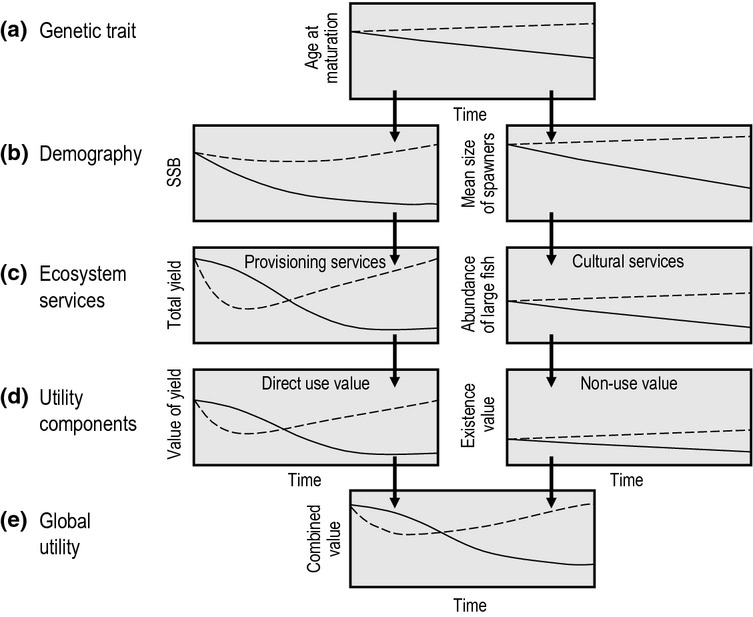Figure 4.

Schematic illustration of a hypothetical prospective evolutionary impact assessment aiming to evaluate two alternative management regimes while accounting for the potential effects of fisheries-induced evolution (FIE). All curves, therefore, show effects of changes in the genetic component of the trait in question. The assessment compares time series of quantities of interest between a status-quo management regime (continuous lines) and an alternative management regime aiming to mitigate FIE by changing fishing selectivity (dashed lines). (a) The status-quo regime is assumed to cause a continual decline of the stock's mean age and size at maturation, whereas the alternative regime is assumed to enable an evolutionary recovery. (b) The status-quo regime implies more severe phenotypic effects – a steadily declining spawning-stock biomass (SSB) and a diminishing average body size of spawners – than the alternative regime, with the latter leading to recovery of SSB and increasing fish size. (c) This has consequences for ecosystem services: provisioning services monotonically decline with yield under the status-quo regime, whereas a steep initial decline is followed by recovery under the alternative regime. Similar conclusions apply to cultural services affected by the loss or preservation of large desirable fish. (d) This implies secondary effects on the associated socioeconomic values or utility components. (e) While the resultant global utility is found to decline monotonically under the status-quo regime, it recovers under the alternative regime. Note that although FIE may often lead earlier maturation at smaller size, as shown in this example, under particular circumstances, it may result in delayed maturation.
